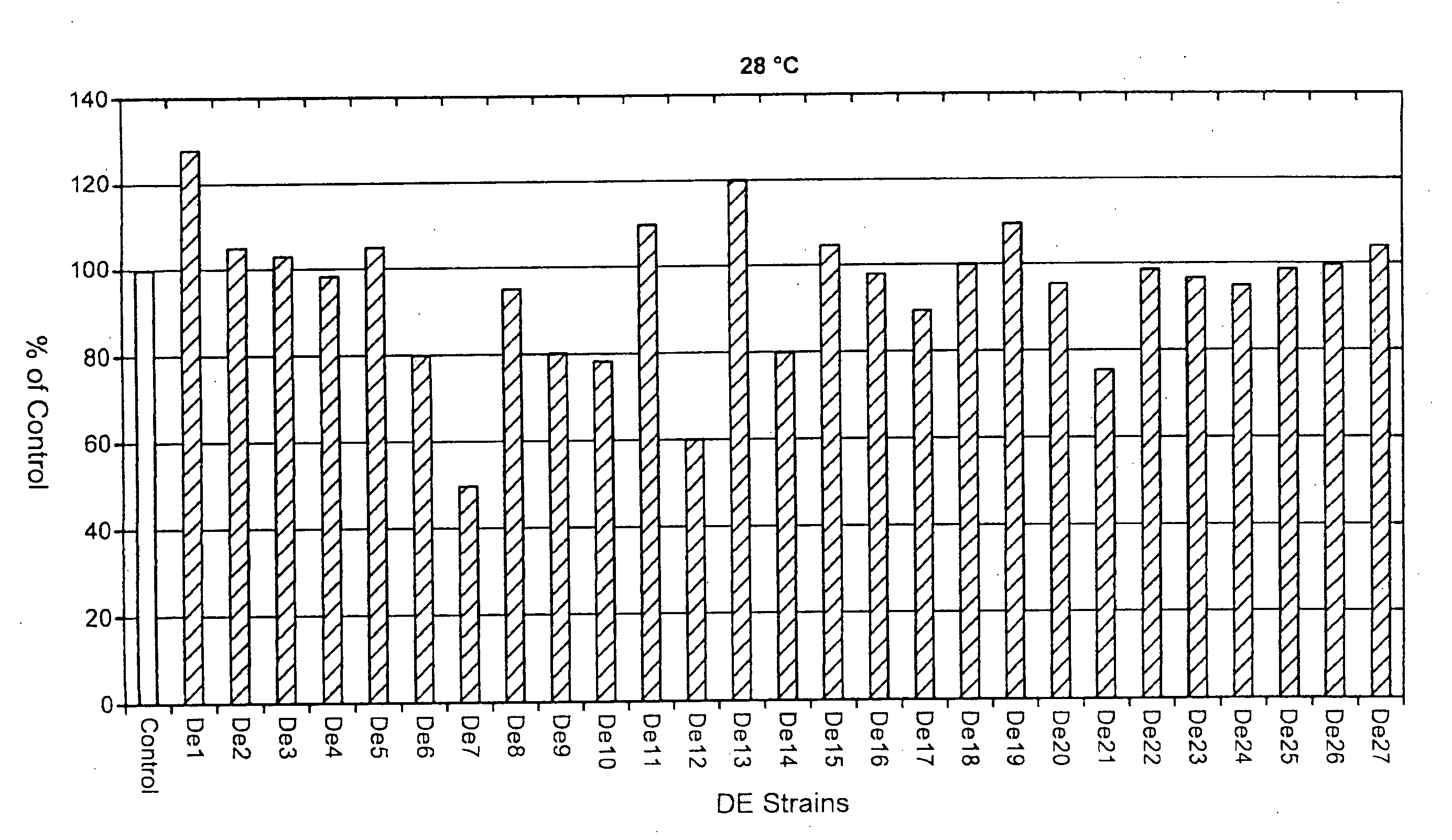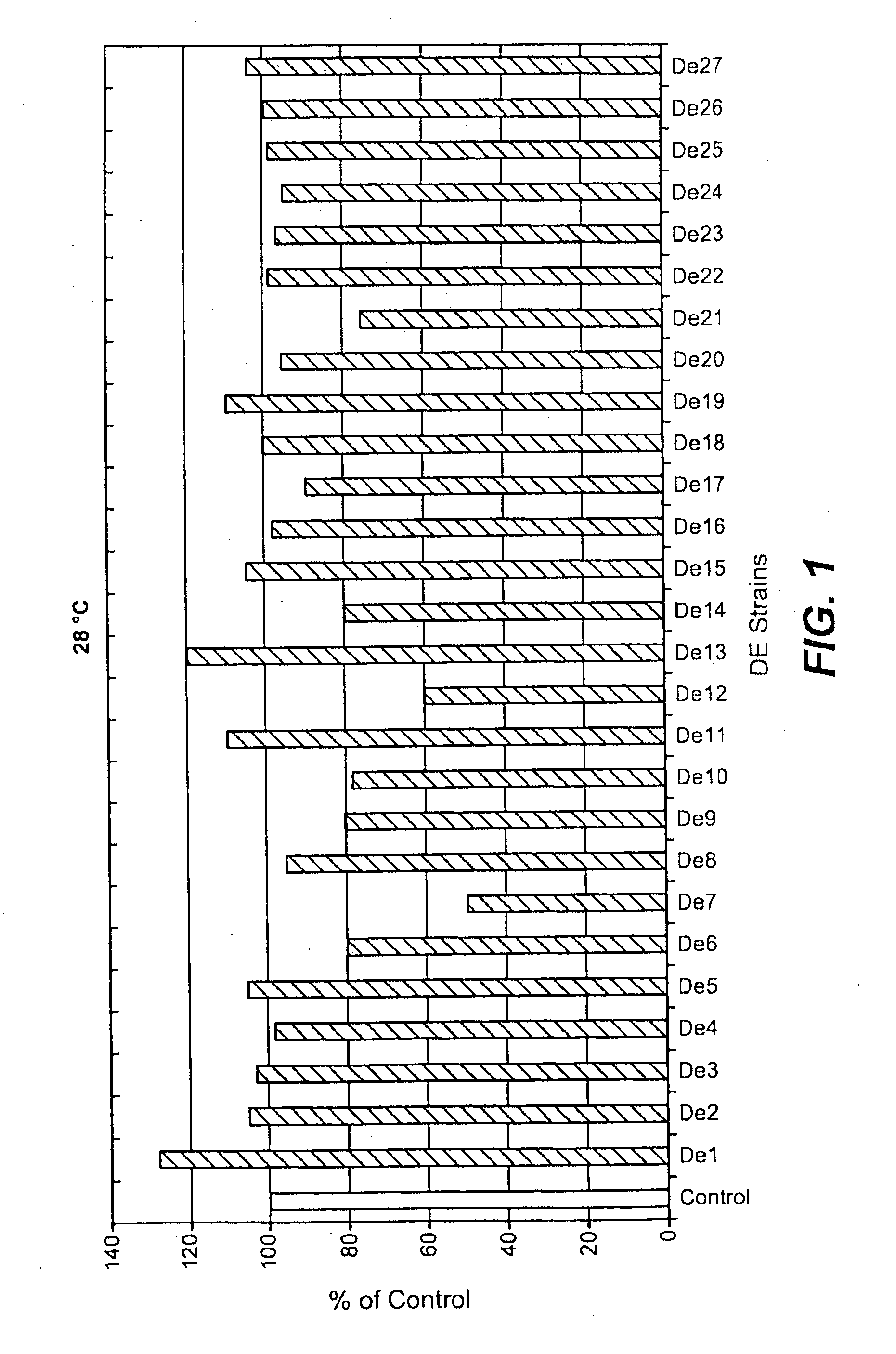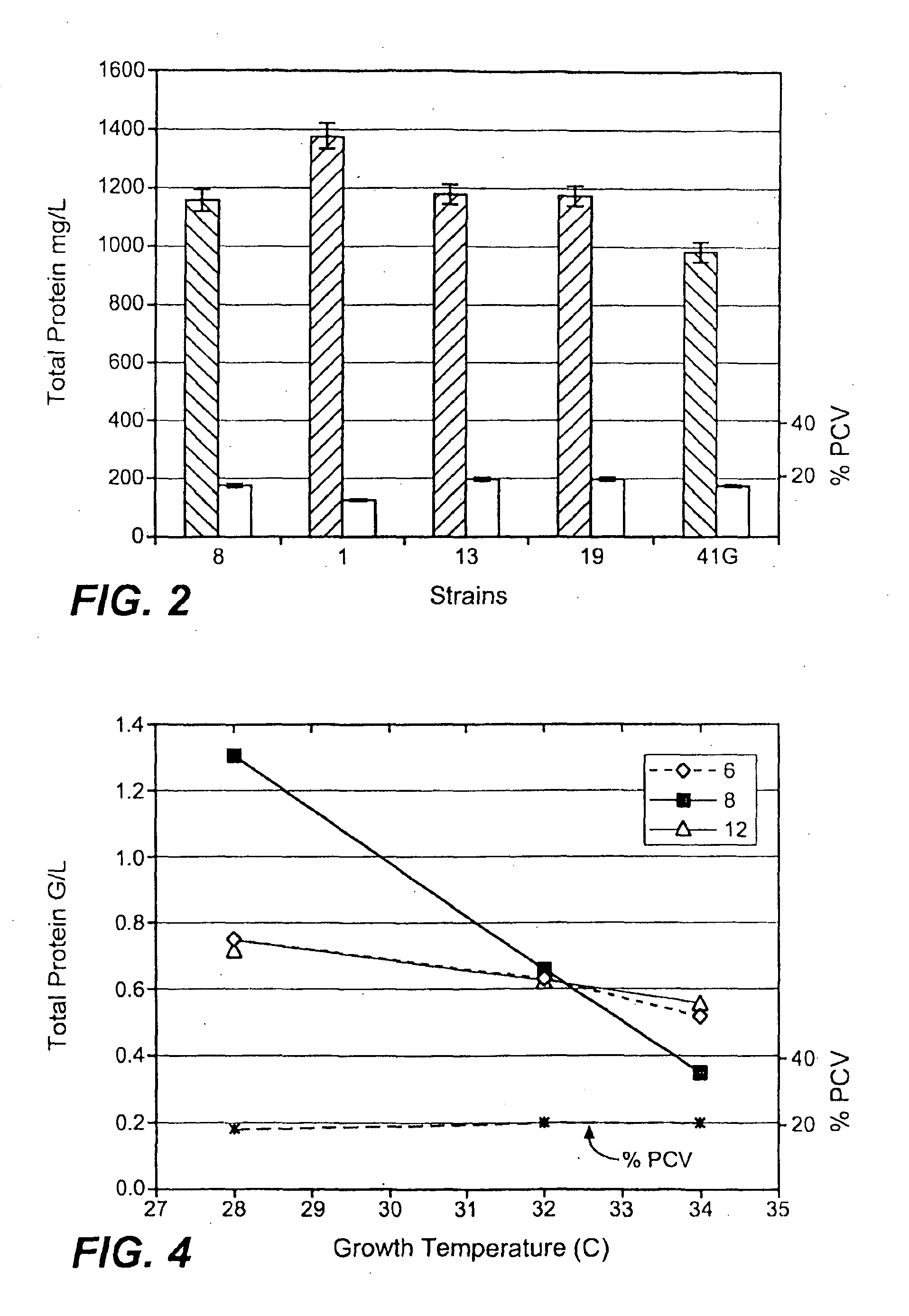Methods for Selecting Improved Strains
- Summary
- Abstract
- Description
- Claims
- Application Information
AI Technical Summary
Benefits of technology
Problems solved by technology
Method used
Image
Examples
Embodiment Construction
[0021]The present invention provides a system of selection techniques for selecting and identifying a novel fungal strain that produces an amount of cellulase enzymes that is greater than a parental strain. The system is highly valuable to the development of improved fungal species and strains. The present invention also provides a system of selection techniques for selecting and identifying a novel fungal strain that produces an amount of cellulase enzymes that is greater than a parental strain at temperatures above 28° C.
[0022]The very large quantity of biomass-degrading enzymes synthesized by saprophytic fungi, such as Trichoderma reesei, requires a significant investment of cellular resources. Evidence suggests that a primary means by which the cell manages these demands is to regulate transcription of the genes encoding these enzymes according to the availability of different carbon sources. It is unclear to what extent each cellulase enzyme-encoding gene has a unique regulator...
PUM
 Login to View More
Login to View More Abstract
Description
Claims
Application Information
 Login to View More
Login to View More - R&D
- Intellectual Property
- Life Sciences
- Materials
- Tech Scout
- Unparalleled Data Quality
- Higher Quality Content
- 60% Fewer Hallucinations
Browse by: Latest US Patents, China's latest patents, Technical Efficacy Thesaurus, Application Domain, Technology Topic, Popular Technical Reports.
© 2025 PatSnap. All rights reserved.Legal|Privacy policy|Modern Slavery Act Transparency Statement|Sitemap|About US| Contact US: help@patsnap.com



